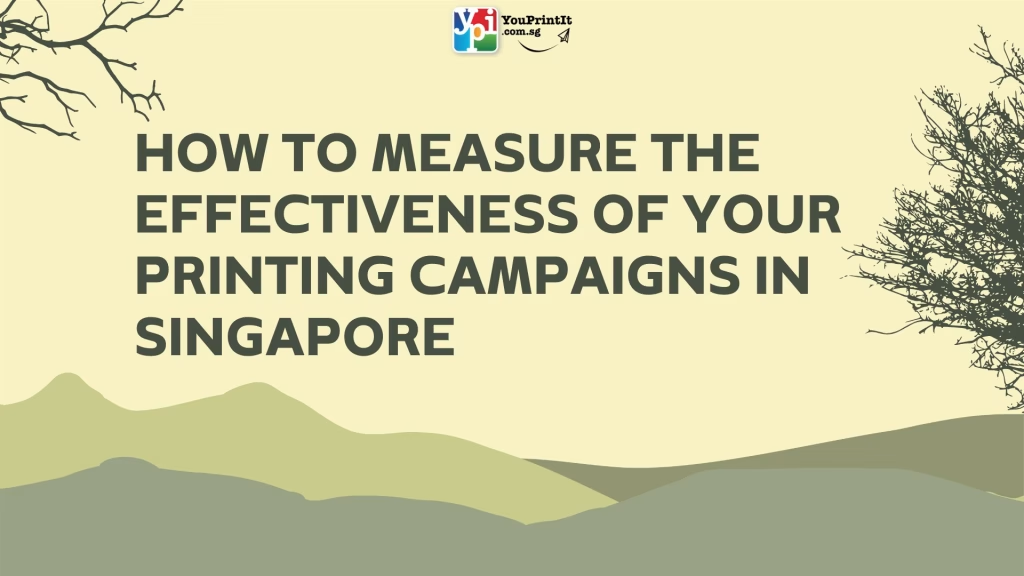Nowadays people tend to underestimate the effectiveness of print advertising. However, Singapore being a vibrant city with high traffic flow, printing campaigns will always yield good surveys.
But their impact is not very hard to measure or so easy as in the cases of other similar campaigns. How do you know that your flyers, brochures or poster contain the right message that would guarantee the intended goals?
This article will identify important approaches to monitor the Printing Campaign Effectiveness Singapore as well as how to maximize the ROI of our print advertising.
1. Trackable QR Codes:
It is hard to find someone who hasn’t encountered QR codes at least once. One particularly useful feature is that one way to leverage QR codes is to utilize them in the resolution of a marketing campaign is to include a set of distinct QR codes in collateral which effectively enables the tracking of user engagement.
a. How it works: Use separate QR codes for each campaign or each of individual messages within a particular campaign.
b. Tracking: When a customer feels like scanning the QR code, he/ she can:
c. Website visits: Tightly track visits of particular pages that are used as the landing pages for the campaign.
d. Lead generation: Collect contact details on the form on the landing pages.
e. Sales: Record transactions of products bought through the scanned QR code by customers.
f. Benefits: Tells you instantly how your campaign is doing so you can tweak it to achieve the best results.
2. Unique Promo Codes:
Provide special coupon codes to encourage people to visit your business, these should be included in your printed copies.
a. How it works: It is recommended to give different codes to different campaign or distribution channel.
b. Tracking:
i. Redemption rates: Check out the number of clients who have used the code at the time of checking out.
ii. Sales attributed to the code: Monitor income that corresponds to the certain promo code.
iii. Customer behavior: Evaluate the buying habits of all consumers, who have bought a product or service with the help of the code.
c. Benefits: It allows one to directly associate new sales with print pieces, and thereby, determine return on investment.
3. Customer Surveys & Feedback:
Directly obtain important information from those who respond to your targets.
a. How it works: Encourage respondent participation for the print media by including a brief survey or feedback form on the reverse side of a brochure.
b. Tracking:
– Customer awareness: Evaluate the understanding of the brand and the key campaign message.
– Campaign effectiveness: Measure the awareness customers had on the design, content and effectualness of the promotional campaign.
– Customer preferences: Find out the areas to work on in the subsequent campaigns.
c. Benefits: Its the second type of measure presenting qualitative information in addition to quantitative analysis giving insights into customers’ attitude.
4. Website Traffic & Conversions:
Pay particular attention to visitor and conversion statistics to gauge the effects of your print advertising on the Web Printing Campaign Effectiveness Singapore.
a. How it works:
b. Website analytics: Monitor the website traffic from different sources especially links from printed media information.
c. Conversion tracking: Track important conversion activities including form submissions, product inquiries and purchases.
d. Tracking:
– Identify trends: Evaluate visits by users to their websites to identify which printed media are most popular on the Internet.
– Measure ROI: The way to determine the return on investment on your print campaigns is to follow the website traffic conversion rate.
e. Benefits: Offers useful information about engagement of audiences with the print media that you launch to fuel your web campaigns and help in meeting overall business objectives.
5. Social Media Engagement:
Offset your print communications with calls to action encouraging social media interaction.
a. How it works: Don’t forget to put social media handles and the right hashtags on your printed products.
b. Tracking:
– Social media mentions: Track how your brand or specific campaign tags are performing on social media networking sites.
– Social media engagement: Measure such aspects as like, share, comments and others that may be connected with the print campaigns.
c. Website traffic from social media: Evaluate number of visits to your websites from social media traffic that is a result of your printed campaigns.
d. Benefits: Gets you a better understanding of how your print campaigns are viewed on social media and increases the exposure.
Implementing Your Tracking Strategy:
1. Set clear objectives: Thus, SMART goals should be set for your print campaigns and they include;
2. Choose the right tracking methods: Choose those tracking techniques which are most suitable for the goals of your campaign and cost-wise.
3. Integrate tracking tools: Subsequently, they need to use website analytics, CRM, and social media analytics tools to collect and analyze data successfully.
4. Analyze data regularly: Review constantly the election data in regard to existing patterns and outcomes and adjust correspondingly.
5. Draw actionable insights: Conduct research to conclusions from the past in order to decide what went well in the campaign and what did not.
To achieve this, I have described above strategies on how the Printing Campaign Effectiveness Singapore can be measured to guarantee good returns on print marketing campaigns investment.
Just be sure that you stick to using this regularly for tracking and analyzing your campaign efforts to ensure that you get the most of your investment.
Anis Sofia is an SEO content writer specializing in crafting optimized articles, blogs, and website content. With expertise in keyword research, on-page SEO, and content strategy, Anis helps businesses build brand visibility and connect with their target audience through engaging, search-friendly writing.




